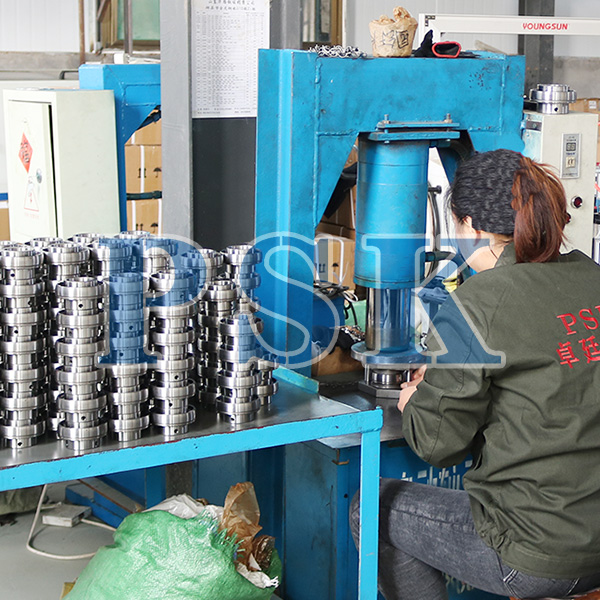1. Gas lubricated bearings:
Gas-lubricated bearings are sliding bearings that use gas as a lubricant. The most commonly used gas lubricant is air, and nitrogen, argon, hydrogen, helium, etc. can also be used as required. Gas-lubricated bearings have the same mechanism as liquid-lubricated bearings. Gas-lubricated bearings are used for gas transmission, diffusivity, viscosity and thermal conductivity, adsorption and shrinkability. Make it between the friction pairs, under the action of fluid dynamic pressure effect, static pressure effect and squeeze effect, form a layer of intact air film, which has the function of supporting load and reducing friction.
Gas-lubricated bearings are generally divided into three types: gas dynamic pressure bearings, gas static pressure bearings and gas extrusion bearings. The lubrication state of theoretical bearings often exists in the form of dynamic, static pressure, dynamic, extrusion, static, extrusion and mixed lubrication states of dynamic, static and extrusion. Gas-lubricated bearings have the same mechanism as liquid-lubricated bearings.
Due to the requirements of special consumption processes, some key equipment of industrial and mining enterprises operates under extremely harsh working conditions. Due to the heavy equipment, high ambient temperature, large dust or acid corrosive gas in the air, etc. There are many problems to the lubrication of the equipment, and the friction and wear are serious. At present, most of the traditional oil and grease lubrication are still used. In fact, these industrial and mining conditions have exceeded the scope of oil and grease lubrication. It is very prone to bite or seizure of bearings and other friction pairs. Cause serious wear and damage of parts, and often cause equipment outages.

The composite material used in the composite lubrication bearing is a new type of extreme pressure resistant solid lubricating material, which is composed of a metal substrate and a solid lubricant paste embedded in the hole or groove of the substrate. The metal substrate bears most of the load during the friction process. After friction, the solid lubricant in the hole or groove is transferred or reversely transferred to the friction surface, forming a solid transfer film with good lubrication, stable adhesion and uniform coverage on the friction surface, which greatly reduces friction and wear. With the cessation of friction, the embedded solid lubricant is provided on the friction surface from time to time, ensuring good lubrication of the friction pair during long-term operation.
3. Water lubricated bearings
Since the emergence of the oil resource crisis in the 1970s and people's attention to environmental protection in recent years, hydraulic transmission technology has faced severe challenges, and water lubrication bearings have begun to be gradually applied. Water-lubricated bearings use water as lubrication and working medium, which not only saves a lot of oil, but also avoids environmental pollution to traditional bearings that use oil as lubrication medium. At the same time, water has the advantages of non-polluting, universal source, safety and flame resistance, etc., and it is an ideal lubricating medium. It can also reduce the friction, wear, vibration, noise, and reactive power consumption of the friction pair. Therefore, the research of water-lubricated bearings has important theoretical research and application value on improving the efficiency of machinery and maintaining the environment, and has become a hot spot in various countries.
Does oil-free bearing really need to be lubricated and smoot

